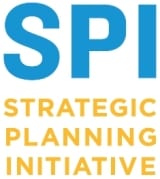ISO New England celebrates 15 years of operation
From the President and CEO, Gordon van Welie
On Sunday, July 1, 2012, ISO New England reaches a significant milestone: 15 years as the region’s grid operator. In that relatively short amount of time, the make-up and operation of the electric power system has changed dramatically. We’ve seen the addition of competitive markets and environmental policy spur growth in new, mostly low-carbon-emitting generating resources; an exponential increase in demand resources; and the entrance of more renewable resources, such as wind. The implementation of a collaborative regional system planning process has significantly increased the reliability of the system through hundreds of transmission projects and upgrades.
The timeline below speaks for itself. It’s quite remarkable to see all that has been accomplished and worked through in our region over the years.

The milestones are summed up in a few words, but the incredible amount of work that went into delivering each and every project can’t be captured by a tick mark on a timeline. I am proud of our accomplishments and know that we couldn’t have done it alone. The consistent support and dedication of the region’s market participants, state regulators and legislators, consumer advocates, and end users has put New England on the map as a region where competitive markets and collaborative planning are working and driving real and positive results.

As we look to the future, it’s clear that the grid is on course for yet another transformation. In late 2010, ISO New England, industry stakeholders, and state government officials embarked on the Strategic Planning Initiative in an effort to identify challenges on the horizon for the New England power system.
We have seen the region’s reliance on natural gas as a fuel source for electricity production increase dramatically over the last decade, and even over the last five years. At the same time, the potential retirement of older fossil-fuel-fired power plants, such as coal and oil, will not only remove capacity from the grid, but will tend to exacerbate the region’s dependence on natural gas. An upsurge in renewable resources, like wind power, will also mean the system must be robust and flexible enough to support the varying amounts of electricity these resources generate. We’re also taking a hard look at how the current market design and system planning process in the region are aligned. You can read more about these challenges and how they are interrelated in the 2011-2012 Regional Electricity Outlook.
ISO New England and regional stakeholders are developing near-term solutions to address some of these challenges, as well as a plan that utilizes wholesale markets to solve the longer-term issues. Our work on this front, including several recently published white papers, presentations, and other discussion materials, can be found on the ISO’s website.
 In the past 15 years, the power grid in New England has gone through major changes, and we know from experience that the dynamic nature of the electric industry means that we can expect more change in the next 15 years and beyond. With our proven track record of working together, I am confident that we will be able to tackle these upcoming challenges and move the power grid into its next evolution.
In the past 15 years, the power grid in New England has gone through major changes, and we know from experience that the dynamic nature of the electric industry means that we can expect more change in the next 15 years and beyond. With our proven track record of working together, I am confident that we will be able to tackle these upcoming challenges and move the power grid into its next evolution.
- Categories
- Inside ISO New England
